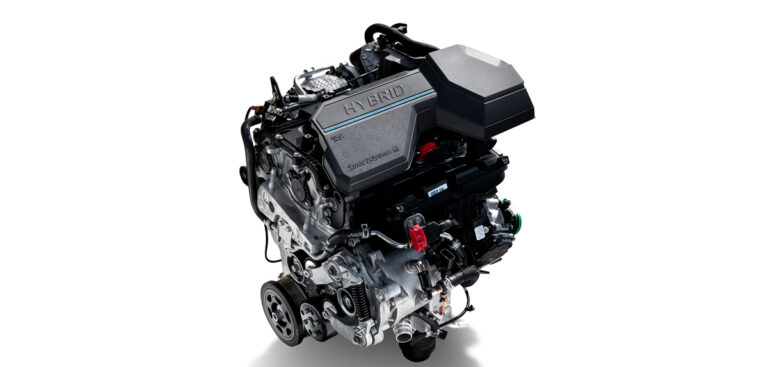Hyundai has unveiled a new powertrain line-up to accompany the launch of its revamped Santa Fe model, which includes two hybrid options.
The first sees the mating of the firm’s recently released 1.6 T-GDi engine with a 44.2kW electric motor and a 1.49kWh lithium-ion polymer battery. Available on either two-wheel or four-wheel drive variants, the system has a combined output 226bhp and 350 Nm torque.
A plug-in hybrid version is due to follow in early 2021, fitted with the same 1.6-liter T-GDi engine but paired with a 66.9kW electric motor and a 13.8 kWh lithium-ion polymer battery. Hyundai said this variant will only be available with four-wheel drive. The total power output will be 261bhp with a combined torque of 350Nm.
Both the hybrid and plug-in hybrid drivetrains are available with a newly-developed 6-speed automatic transmission, the 6AT, which Hyundai said is more efficient than its predecessor.
Hyundai noted that the new 1.6-liter T-GDi engine is the first to utilize its continuously variable valve duration (CVVD) technology and also features low-pressure exhaust gas recirculation (LP EGR) to further optimize fuel efficiency. The CVVC regulates the duration of valve opening and closing according to driving conditions, achieving a boost in performance and improvements in fuel efficiency and emissions.
The LP EGR returns some of the gas burned by the engine to the combustion chamber, producing a cooling effect and reducing the emission of nitrogen oxides. The 1.6 T-GDi also features a low-pressure system that redirects the burned emission gas to the front of the turbocharger compressor rather than the intake system, to increase efficiency under high load conditions.
 Beyond the hybrid offerings will be a heavily revised 2.2 liter diesel (above), with the most significant update a switch from a cast iron to aluminum block, which the company said knocked an impressive 19.5kg off its weight. With efficiency the name of the game, Hyundai engineers have also focused on reducing parasitic losses, for example, in the valvetrain. Diesel injection pressure has also been upped from 2,000 bar to 2,200 bar, allowing for tighter control over injection timing.
Beyond the hybrid offerings will be a heavily revised 2.2 liter diesel (above), with the most significant update a switch from a cast iron to aluminum block, which the company said knocked an impressive 19.5kg off its weight. With efficiency the name of the game, Hyundai engineers have also focused on reducing parasitic losses, for example, in the valvetrain. Diesel injection pressure has also been upped from 2,000 bar to 2,200 bar, allowing for tighter control over injection timing.
The revised four pot is twinned with a newly developed 8-speed wet double-clutch transmission (8DCT) [below]. This offers greater torque capacity compared with Hyundai’s previous, 7-speed DCT, which is increased by 58% thanks to improved cooling of the clutches.
When coupled with the 2.2-liter engine, the new transmission is also said to increase efficiency by 3% compared with the previously available 8-speed automatic.



